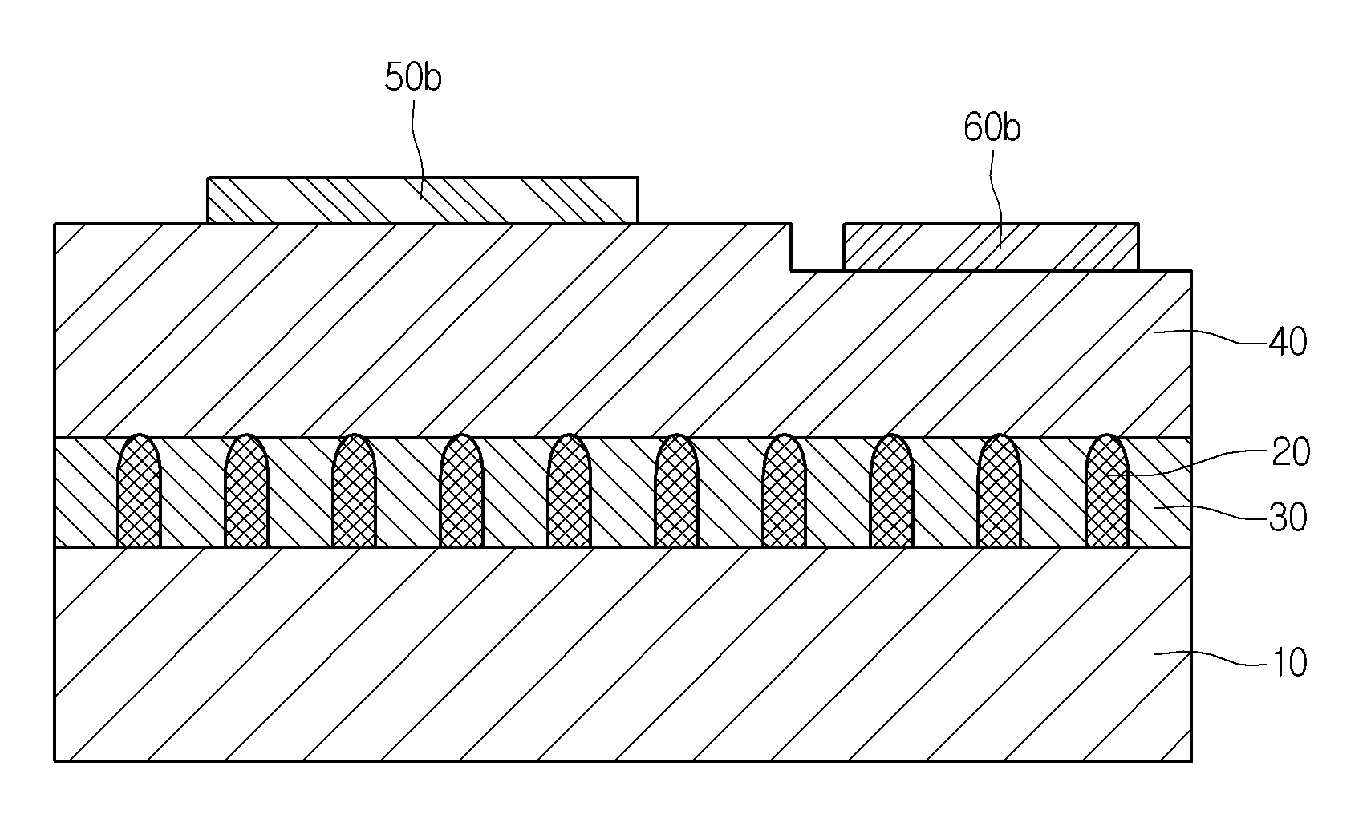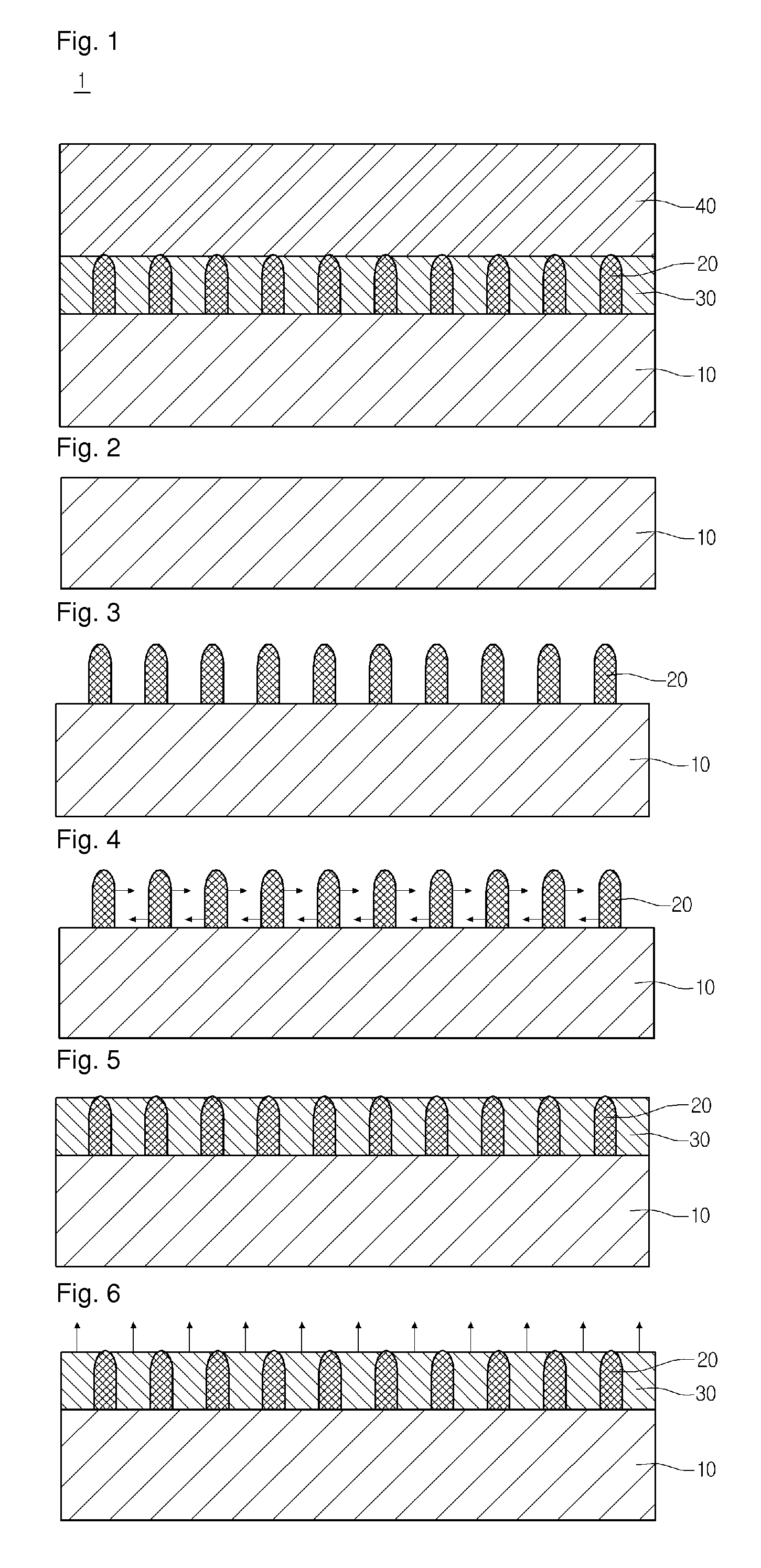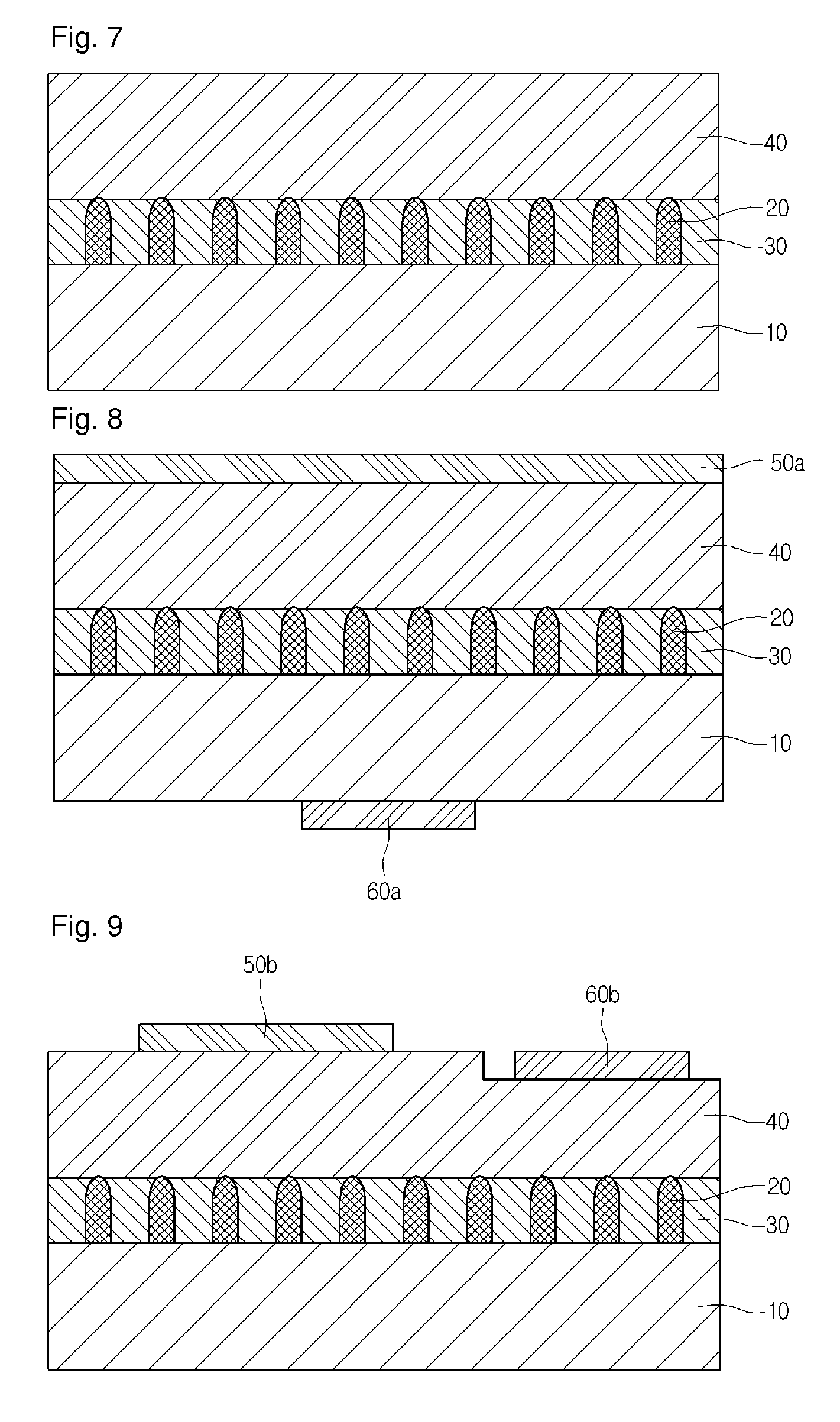Semiconductor device and method for growing semiconductor crystal
a semiconductor and crystal technology, applied in the direction of semiconductor devices, basic electric elements, electrical equipment, etc., can solve the problems of affecting the reliability of the semiconductor device, increasing manufacturing costs, and complicated manufacturing process, so as to improve the crystalline of the semiconductor layer, reduce process costs, and improve the effect of the semiconductor layer
- Summary
- Abstract
- Description
- Claims
- Application Information
AI Technical Summary
Benefits of technology
Problems solved by technology
Method used
Image
Examples
first embodiment
[0026]Referring to FIG. 1, a semiconductor device 1 may include a pattern 20, a buffer layer 30, and an epitaxial layer 40 on a base substrate 10.
[0027]The base substrate 10 may be formed of silicon carbide. The silicon carbide has a band gap and thermal conductivity greater than those of silicon. Also, the silicon carbide has carrier mobility similar to that of the silicon and a saturated electron drift velocity and pressure resistance greater than those of the silicon. Thus, the silicon carbide may be applied to a semiconductor device for which high efficiency, high pressure resistance, and high capacity are required.
[0028]The self-assembled pattern 20 is grown on the base substrate 10. The self-assembly represents a phenomenon in which components of molecules voluntarily form a well-ordered structure without artificially manipulating the respective molecules. When the base substrate 10 containing the silicon carbide is exposed to a carbon compound gas, the self-assembled pattern...
second embodiment
[0053]Referring to FIG. 10, in a semiconductor device 2 an epitaxial layer 130 may be disposed on a base substrate 110 including a pattern groove 120.
[0054]The base substrate 110 may be formed of silicon carbide. The silicon carbide has a band gap and thermal conductivity greater than those of silicon. Also, the silicon carbide has carrier mobility similar to that of the silicon and a saturated electron drift velocity and pressure resistance greater than those of the silicon. Thus, the silicon carbide may be applied to a semiconductor device for which high efficiency, high pressure resistance, and high capacity are required.
[0055]The pattern groove 120 is defined in the base substrate 110. A defect of the epitaxial layer 130 directly disposed on the base substrate 110 may be significantly reduced through the pattern groove 120.
[0056]Specifically, the base substrate 110 formed of the silicon carbide has a basal plane dislocation (BPD) 102. Since the BPD 102 greatly affects reliabili...
PUM
| Property | Measurement | Unit |
|---|---|---|
| height | aaaaa | aaaaa |
| diameter | aaaaa | aaaaa |
| humidity | aaaaa | aaaaa |
Abstract
Description
Claims
Application Information
 Login to View More
Login to View More - R&D
- Intellectual Property
- Life Sciences
- Materials
- Tech Scout
- Unparalleled Data Quality
- Higher Quality Content
- 60% Fewer Hallucinations
Browse by: Latest US Patents, China's latest patents, Technical Efficacy Thesaurus, Application Domain, Technology Topic, Popular Technical Reports.
© 2025 PatSnap. All rights reserved.Legal|Privacy policy|Modern Slavery Act Transparency Statement|Sitemap|About US| Contact US: help@patsnap.com



